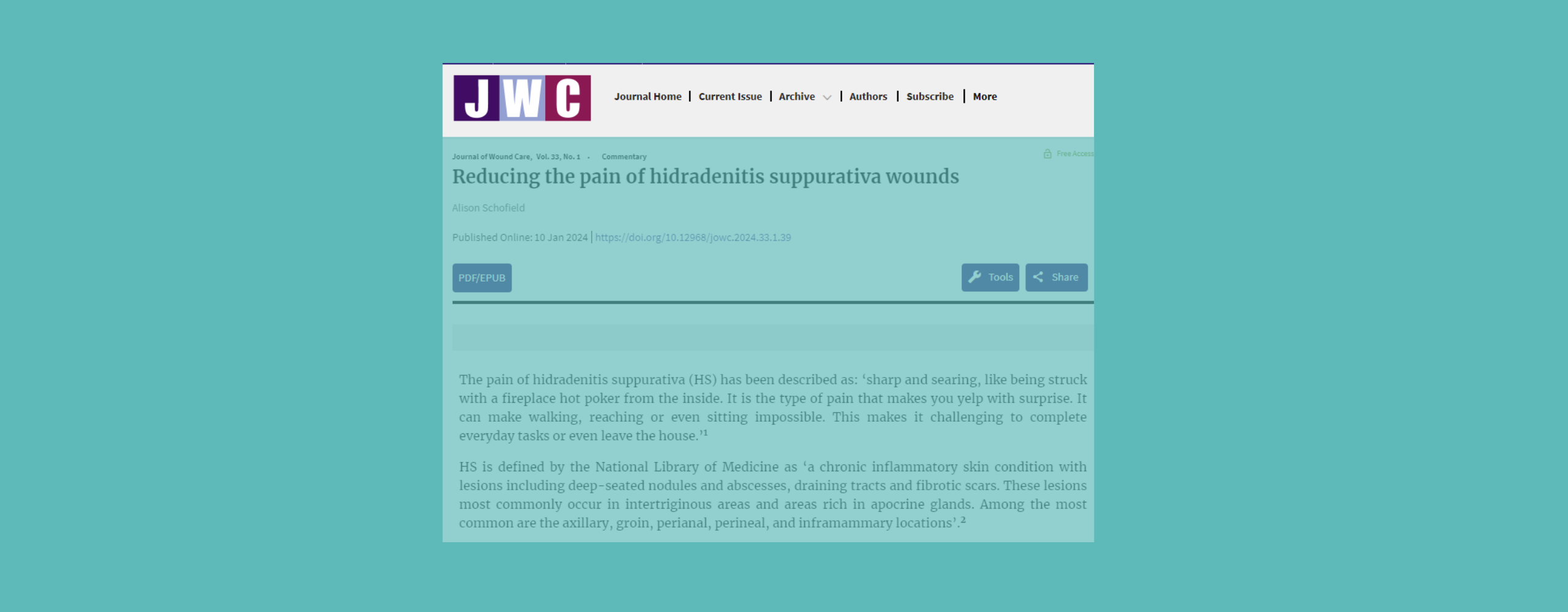Journal of Wound Care Vol 33, No.1
Hidradenitis suppurativa (HS) is a chronic inflammatory skin condition that causes significant pain and impacts the quality of life of patients. A recent study published in the Journal of Wound Care sheds light on this debilitating condition and offers insights into better managing the pain associated with HS wounds. A must-read for all Health-Care professionals with an interest in HS, here are our key takeaways:
- Severe Pain and Quality of Life Impact: Patients with HS experience intense pain, often compared to being struck with a hot poker. This pain severely impacts their daily activities and QoL, making HS one of the most debilitating skin diseases.
- Dressing Changes and Pain: The study highlights that dressing changes are often the most painful part of treatment for HS patients. Traditional gauze dressings, in particular, are associated with increased pain.
- Advancements in Dressing Techniques: Moist wound healing dressings are now considered more effective than dry dressings like gauze. These advanced dressings cause less trauma to the wound, reducing pain significantly.
- Patient-Reported Experiences: Many patients report discomfort, embarrassment, and a sense of isolation due to the challenges in managing their dressings. This emphasizes the need for more patient-friendly dressing solutions.
- New Dressing Systems: The study mentions the success of HS-specific lesion dressing systems, such as Hidrawear, which have been shown to significantly reduce pain and improve QoL in clinical trials.
- Guidelines for Pain Management: Recommendations include using soft, flexible, and adhesive-free dressings, and employing atraumatic techniques during dressing changes to minimize pain.
- Holistic Approach to HS Management: While addressing the underlying disease is crucial, simple changes in daily wound care can significantly improve pain management and enhance the QoL for HS patients.
For more in-depth information on this important topic, please refer to the full article in the Journal of Woundcare.

